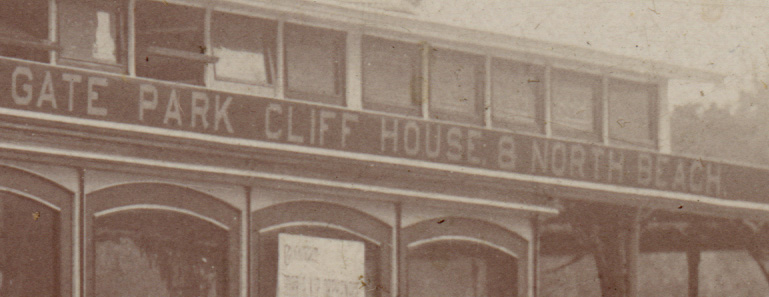Cable Car

|
Info on this photo was provided by Walter Rice, Cable Car Museum:
In late 1888 Cal Cable adopted a new cable car design to replace its two-car trains – "California" cars, a "double-ended" car with an enclosed middle section and open sections at both ends. During 1890-1 the San Francisco car builder John Hammond Car Co. built fifty of these cars for Cal Cable. They were numbered 1-50. All were destroyed during the fire that followed the 1906 earthquake. Prior to 1903-05 when state law mandated for safety reasons end windows, these cars operated without end windows as this view of No. 9 illustrates. The location is the western end of the California Street line – 150 feet west of Central (Presidio) Avenue. The stone fence belongs to the Laurel Hill Cemetery. The non cable car rail in the picture is part of the Ferry & Cliff House Railway’s Park steam line branch. A custom of the 1890s was for photographers to photograph cable car crews at the end of lines and then return with the finished photograph to sell to the posed gripman and conductor. It is most probable that this photograph was one such shot. In any event, it is probably the best photograph of an early Cal Cable “California” car without end windows. Note, also the front signage that reads from left to right “Central Avenue, California & Market Street."
In actuality Cal Cable never ran to the Cliff House or the Park. At Central (Presidio) Avenue passengers could transfer to F&CH, later Market Street Railway (1893) and still later United Railroads (1902) steam services to the Park via 7th Avenue and the Cliff House--the Cliff line. This line did not go to the Cliff House, but ended at 48th Avenue and Seal Rock Drive! It was not until the advent of the Sutro Railway that electric streetcars went very close to the Cliff House. In 1905 the Cliff steam was converted to electric streetcar. It began then to use the Sutro Terminal. This line became the URR No. 1 Sutter & California and the old Sutro RR line became the No. 2 Sutter & Clement. |

